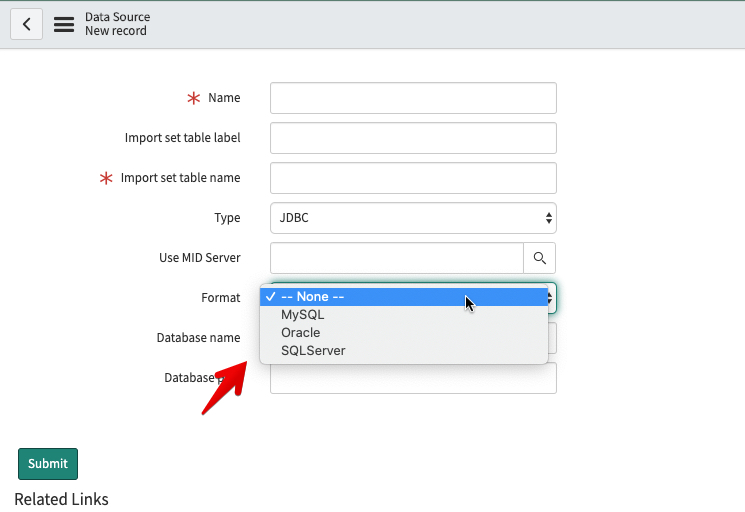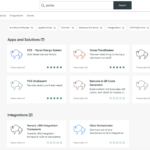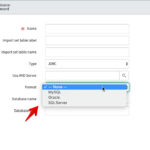At the time of this post, ServiceNow provides out-of-the-box data import support for three types of databases. What happens if you want to import data from a type of database server that is not offered in your instance?
Luckily, ServiceNow allows you to add support for other JDBC connectors beyond what is offered and supported by default in the platform. While this is not an overly difficult thing to do, the trick is knowing where to do it.
Essentially, you need to do about three major things to accomplish this task:
1. Install the database JDBC driver
You will need to go to the database manufacturer’s website to download a trusted JDBC driver in the form of a JAR file.
Once you have this driver, upload it to the ServiceNow instance by navigating to “MID Server > JAR Files”
Enter in descriptive information on the JAR File form and then attach your JAR file to the record.
2. Add the JDBC Format choice to the Data Source table
Navigate to a Data Source record and select “Type” as JDBC. Then right click on the “Format” field and choose to “Configure Choices”. You will add a choice for your new Database server type there.
Once you have done that, you will need to go back into the “Format” field’s choice list and edit the value of the choice option. In the value field, you will want to change it to the Java class name for the JDBC Driver. This tells the system what JDBC class to call when using this database format.
3. Use a business rule to automatically set your connection_url
The Data Source table has a “Connection URL” field that contains the JDBC connection string that will be leveraged by the JDBC protocol on the import. You will want to create a business rule that automatically sets that field using the appropriate fields from the Data Source table.
Really that is all you have to do. I recommend you review the video embedded below to see how I follow these steps to set up my ServiceNow instance so that I can import data from a PostgreSQL database:





